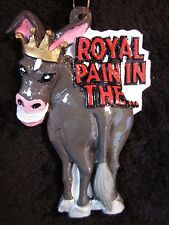
The need for a better way to objectively measure pain instead of relying on patient self-reporting has long been an elusive goal in medicine. Now, however, advances in neuro-imaging techniques have re-invigorated the debate over whether it might be possible to measure pain objectively.
An effective “pain-o-meter” will reap big rewards. Currently, chronic pain costs America around $600 billion each year in medical expenses and lost productivity. There is also a cultural bias against chronic pain sufferers who are viewed as weak, or even worse, perceived as lying about their pain. Similar biases crop up in the legal field, with hundreds of thousands of cases each year hinging on the existence of pain.
The first step toward developing a diagnostic tool that could eliminate the dependency on pain self-reporting has been taken by researchers from the Stanford University School of Medicine. The new tool attempts to use patterns of brain activity to give an objective physiologic assessment of whether someone is in pain.
The idea for this approach came from a 2009 Stanford Law School event that brought together neuroscientists and legal scholars to discuss how the neuroimaging of pain could be used and abused in the legal system. Three attendees, Sean Mackey, Neil Chatterjee and Justin Brown decided to take up the challenge of turning the hypothetical pain-o-meter into reality.
“It was very much on a whim,” said Chatterjee. “We thought, maybe we can’t make the perfect tool, but has anyone ever really tried doing this on a very, very basic level? It turned out to be surprisingly simple to do this.”
“We asked the computer to come up with what it thinks pain looks like,” Chatterjee said. “Then we could measure how well the computer did.” And it did amazingly well. The computer was successful 81 percent of the time. I was definitely surprised.”
Reporting their work in PLoS ONE, the researchers caution that future studies are needed to determine whether these methods will work outside the lab, and whether they can distinguish accurately between pain and other emotionally arousing states, such as anxiety or depression.
Related:
Love the pain away
Gene therapy painkiller gets body to produce its own pain relief drugs
Fine Line Between Pleasure & Pain














Comments are closed.